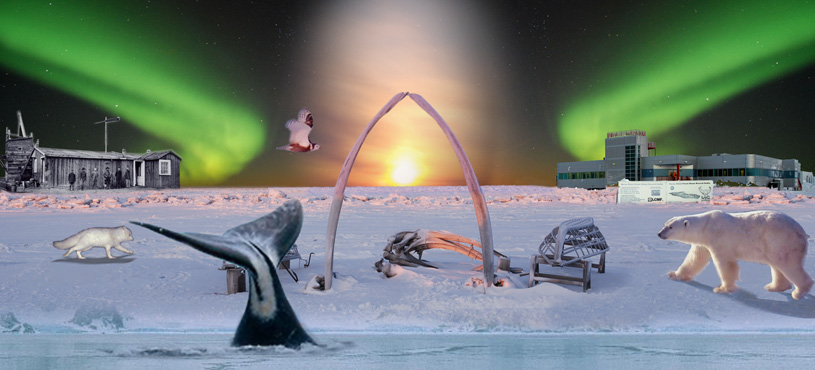
LATEST POST-CONFERENCE NEWS
more…
WELCOME TO THE POLAR GATEWAYS ARCTIC CIRCLE SUNRISE WEBSITE
Dr. John F. Cooper, Conference
Chairman
The ICESTAR/IHY team for the International Polar and Heliophysical Years
2007-2009 convened the Polar Gateways Arctic Circle Sunrise 2008
conference at Barrow, Alaska, the northernmost town of the United
States, during the first week of local polar sunrise, January 23-29,
2008 to address the earth, planetary, and heliophysical science and
future exploration of polar and icy worlds in the solar system. In the
words of T. S. Eliot (see below) we found that “the end of all our
exploring will be to arrive where we started” with a new appreciation
for connections of science of the Sun, the Earth, the other planetary
bodies, and the heliosphere from these different disciplines. In
visiting Barrow, accessible at this time only by air travel and
otherwise isolated in all directions by icy tundra or ocean, all on-site
participants gained a true sense of what life would be like in
pioneering communities on other worlds. Videoconference and
teleconference technology allowed us to extend two-way participation in
the science sessions to ICESTAR/IHY team scientists gathered at other
Arctic sites in Norway, Sweden, and Russia, also to Antarctica, and to a
larger group of scientists at two NASA Centers and three universities in
the U.S. Over half of our conference contributions originated from these
remote sites. Our local hosts at the Barrow Arctic Science Consortium
(BASC) provided the newly constructed venue of their Barrow Arctic
Science Center and connected us to the physical environment and cultural
traditions of Barrow. All principal science proceedings were web
broadcast live through videoconferencing facilities of the University of
Alaska Fairbanks and educational sessions were made available to
participating schools through the NASA Digital Learning Network. We
invite you to join in our memorable polar exploration experience at the
“top of the world” by exploring here on-line the full archival records
of these proceedings as unique legacies from the current international
years to present and future generations of scientists, educators,
students, and the general public.
“The visiting astronomers not only taught us, but they came to listen
and learn about the traditions and science of the local Inupiat Eskimo
people. They went to the schools and talked with elders and people of
all ages.”
Earl Finkler, KBRW Radio, Barrow\



